Kia has pulled the covers off its new Tasman midsize 4×4 ute and it appears not everyone is keen on the styling.
Since the curtain dropped at the big reveal in Saudi Arabia, with a smaller unveiling in Tasmania, the online comments about the look of the ute have been less than positive.
Get past the blunt front-end styling with its long, thin LED headlights on the outer edges, and you’ll find that Kia has otherwise stuck to a proven formula for such vehicles, just like the category stalwarts such as Ford Ranger, Toyota HiLux, Isuzu D-MAX and Mitsubishi Triton, among others.
A ladder frame chassis with wishbone IFS and a live-axle rear with leaf springs is standard on all 4×4 utes, as is a choice of single- or double-cab passenger cabins and cargo tub or cab-chassis variants.
A diesel engine driving an automatic transmission with a part-time dual range transfer case mimics the drivelines of the established players that Kia is hoping to challenge with this latest offering. The Korean brand that has grown rapidly in Australia with a strong portfolio of passenger cars and SUVs hasn’t broken the mould and created something all-new, preferring to stick with the status quo and join the pack.
But it’s not just its styling that will set the Tasman apart when it hits the roads in Australia midway through 2025. Kia’s first foray into the ute market will bring a vehicle that has a bigger cabin that is very well equipped and laid out, and it will have a host of clever inclusions that you won’t find on other products in the segment.
The Tasman will arrive in five variants including the single-cab and 2WD model. There will be no extra-cab offered as these are not popular in Australia. The popular 4×4 double-cab variants will come in Baseline, X-Line and X-Pro model grades, and all will be driven by Kia’s 2.2-litre diesel engine that produces a claimed 155kW of power and 441Nm of torque.
While output is no match for the class-leading engines in the HiLux, Amarok and Ranger, it is close to the D-MAX and Triton. Kia says that the performance of Tasman is not about the peak torque figure but the broad usable delivery lower in the torque curve.
This engine is already well established in other models in the Kia range but has been optimised for the Tasman 4×4 with specific features including an upgraded cooling system for better engine temperature control at low speeds and when towing heavy loads. At launch it will be the only engine offered in Tasman in Australia.
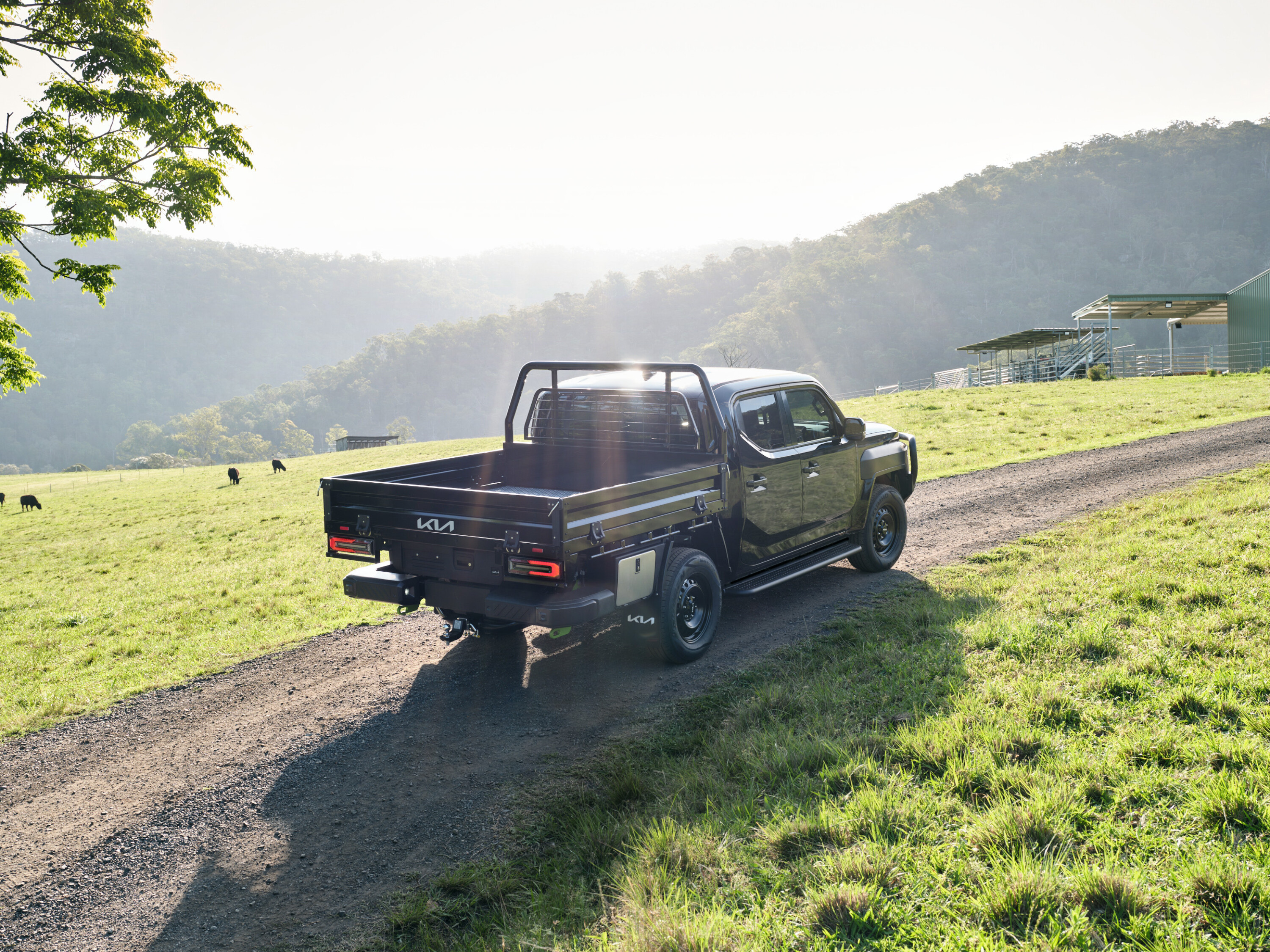
Kia has a broad range of EV powertrains that it uses elsewhere in its model line-up and it will only be a matter of time before we see some form of electrification in the Tasman.
When the Tasman goes on sale in Australia the diesel engine will only be in EU5 configuration which means it won’t need Adblue SCR, but it does meet EU6 standards in other markets and can be updated if and when that standard becomes necessary in Australia.
The transmission is a traditional torque converter driven eight-speed automatic and the part-time transfer case offers 2WD, 4×4 auto, locked 4×4 high range and locked 4×4 low range, much like that found in the current Ranger. The 4×4 driveline is optional on the Baseline model and standard on X-Line and X-Pro models.
The X-Pro is the most off-road focused model thanks in part to its 252mm ground clearance, which is 28mm higher than the rest of the Tasman range. The X-Pro also rides on 17-inch alloy wheels fitted with all-terrain tyres in lieu of the 18-inch wheels paired with highway tyres on other variants. Tasman X-Pro also gets a lockable rear differential while no front locker is available.
Off-road drive modes include Sand, Mud, Snow and Rock settings, while an X-Trek mode gives low-speed cruise control for off road use. Kia quotes the wading depth at 800mm at a speed of 7km/h or slower, and this is enabled by having the engine air intake entering via a highpoint on the inner guard. Tasman gets a class standard 3500kg towing capacity with up to 350kg on the tow ball. The ute also has configurable settings for different trailers that optimise Tasman’s ADAS systems when towing.
The Tasman isn’t the first – and I’m sure won’t be the last – vehicle that owners say looks a lot better from the inside than out. The interior is spacious and well laid out with dual 12.5-inch wide-screens giving the dash a premium look and keeping the driver informed of all the vitals. The multimedia screen has all the usual phone mirroring and navigational features while oft-used functions like the dual cabin temperature toggles and volume dial are all outside of the screen and easily accessed.
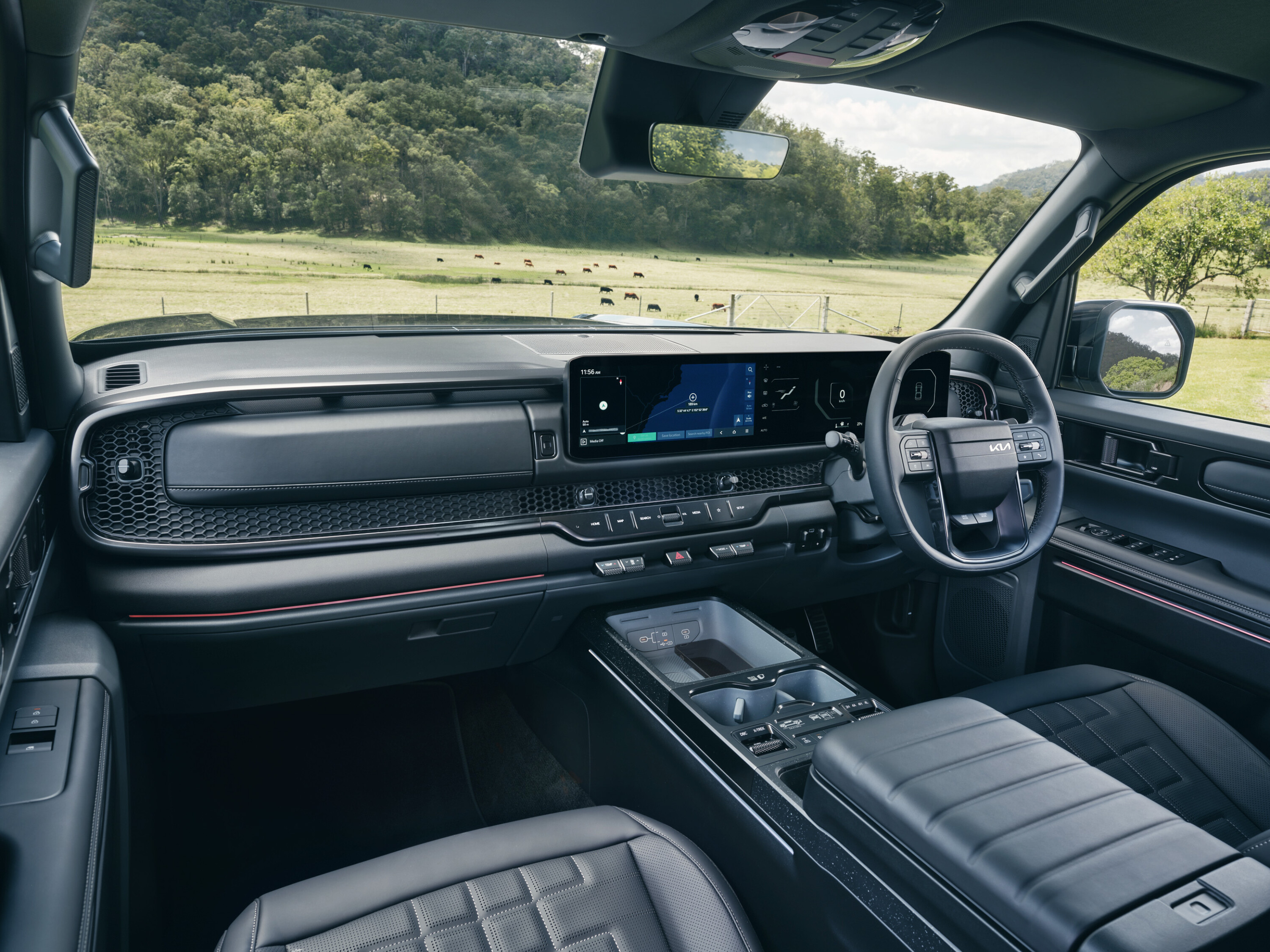
The sculpted, leather-trimmed seats in the X-Pro model we sampled are comfortable with lots of adjustment and you can feel the extra width of the cabin when you sit in the driver’s seat. This width is also appreciated in the rear seat, as is the ability to slide the seats forward giving more angle on the backrest for passengers.
This was possible with adults in both the back seat and the seat in front of it. Families with teenage kids will certainly appreciate the extra cabin space and versatility of the Tasman over most other utes in this class.
The Tasman has nifty features and tricks all around that add to its versatility and practicality. There are 240V power outlets (GPO) in the cab and in the cargo tub to power and charge your electrical devices, a little glovebox sized lockable storage compartment in the plastic cladding down the driver’s side, and foot holes in the corners of the rear bumper to aid getting in and out of the tray.
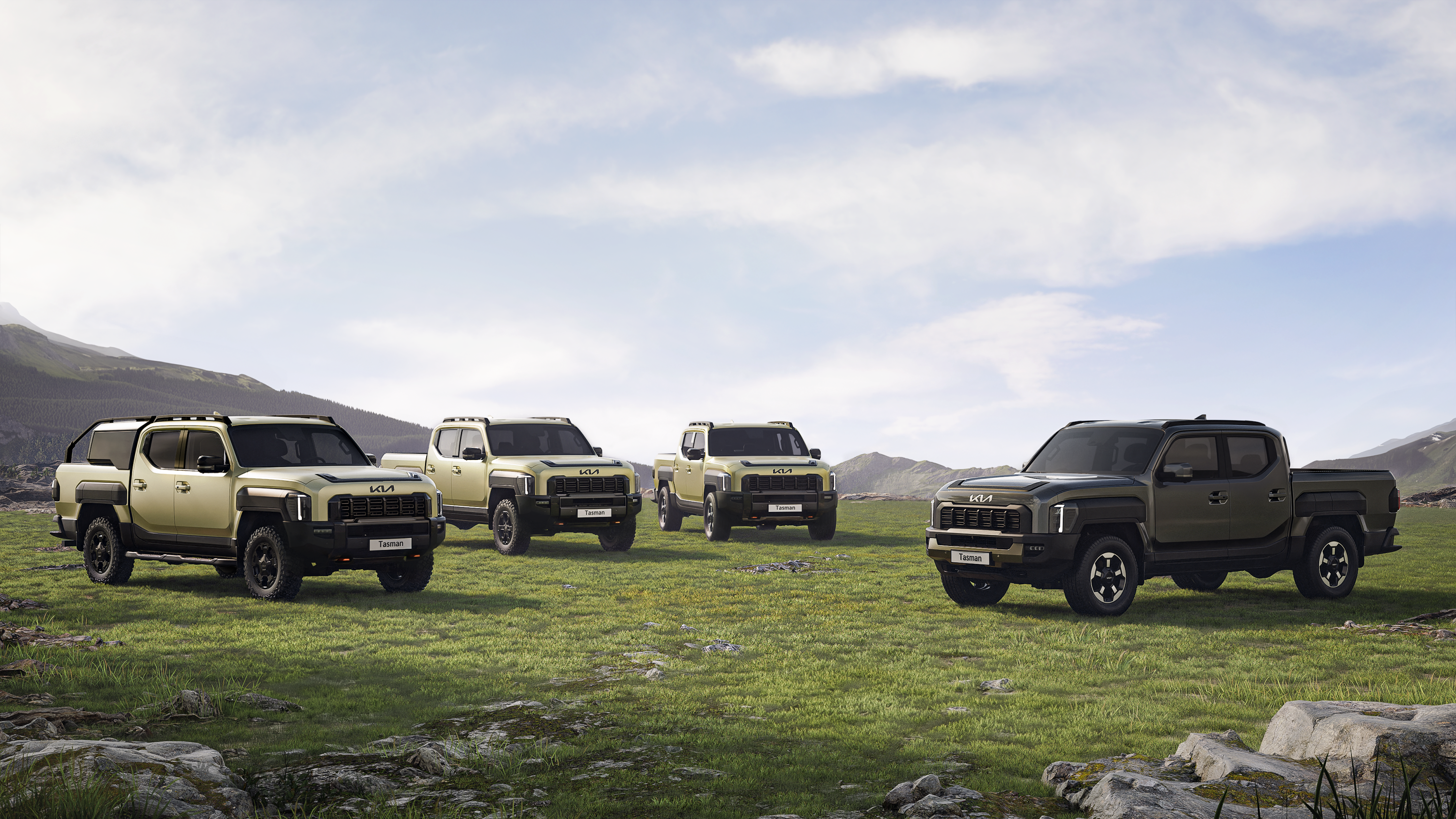
However, we reckon the designers of these steps must have small feet as they barely let your boot in them, so they are not as useful as the similar ones on a Ford Ranger. Lighting in the cargo tub is a useful addition.
The tub measures 1515mm long and 1572mm wide, with 1186mm between the wheel arches, and is 540mm deep. The total volume of 1173 litres is claimed to be class leading. And while most manufacturers like to boast that they can fit a Euro pallet in between the wheel arches, Kia proudly claims that you can fit a wider Australian pallet in the back of the Tasman.
Kia has been testing Tasman prototypes in the harshest environments that it could find around the world, including Australia, over several years and it is says that its ute is now ready for Australia.
We’ll have to wait until next year to confirm this claim with the Tasman planned to hit showrooms in mid-2025.
The Ford Ranger 4×4 is on the verge of passing 50,000 year-to-date sales in 2024, and its closest competitor, the Toyota HiLux, also reached a significant milestone in October.
Ford ended the month with a total of 49,028 YTD sales registered for its Ranger 4×4, which is a 9.2 per cent improvement compared to the same time last year (44,902 sales). The HiLux 4×4 surpassed 40,000 YTD sales in October, which is an impressive feat for a vehicle essentially at the end of its lifecycle.
As always, the Isuzu D-MAX 4×4 was the third best-selling 4×4 ute on both the October and YTD charts. The D-MAX ended October with 1884 monthly sales and 20,233 YTD sales.
The Everest once again gave the Blue Oval a one-two punch, with the big SUV remaining the best-selling 4×4 wagon in Australia. It ended October with 2668 total sales, placing it ahead of Isuzu MU-X (1356) and 300 Series LandCruiser (1190). Proving Australia’s love affair with the Nissan Patrol still exists, is the V8 wagon’s re-emergence on the Top 10 charts, with Nissan shifting 813 units in October – a 10.9 per cent increase compared to this time last year.
Both the Volkswagen Amarok and Nissan Navara slipped out of the 4×4 charts in October, registering just 626 and 620 sales respectively.
GWM’s Ute remained the best-selling budget option in October (586 sales), ahead of the LDV T60 (530) and SsangYong Musso (231). The GWM Cannon Alpha Ultra Hybrid registered 174 sales on debut. The Chevrolet Silverado (including HD model; 331 sales) outsold both the RAM 1500 (258) and Ford F-150 (247).
The Ford Ranger may be dominating the 4×4 market, but Toyota has a stranglehold on total new car sales, registering 18,471 in October 2024. Ford was next best with 8581 sales, followed by Mazda (7656), Hyundai (7086) and Kia (6602). The RAV4 was once again the best-selling vehicle in Australia (4841 sales), followed by the Ranger 4×2/4×4 (4757), HiLux 4×2/4×4 (4523), and D-MAX 4×2/4×4 (2295).
Monthly sales declined in both the SUV and LCV segments – compared to October 2023 – down 5.2 per cent and 13.7 per cent respectively. Plus, new car sales in the PU/CC 4×4 segment dropped by a significant 19.3 per cent. And despite new car sales exceeding one million YTD in October, overall sales have declined 7.9 per cent compared to October 2023.
“While not at the record levels of 2023, the October result is solid,” said Tony Weber, FCAI Chief Executive. “However, we remain concerned about the continuing performance of the private buyers segment which was down 14.2 per cent this month following a reduction of 17.2 per cent in September. This does indicate that economic pressures are a concern for families across the country.”
Also of significance is the introduction of plug-in hybrids (PHEV) in the 4×4 segment. It’s a segment to watch with interest, with order books opening for the BYD Shark at the end of October; and the Ford Ranger PHEV coming in 2025.
“We are now witnessing the introduction of new plug-in hybrid models in the SUV and Light Commercial segments which have previously been dominated by petrol and diesel models,” Weber said. “This is significant given the overwhelming popularity of SUVs and Light Commercial vehicles in Australia.”
Top-selling 4x4s in October 2024
| 1: Ford Rangeru00a0 | 4469 |
|---|---|
| 2: Toyota Hiluxu00a0 | 3698 |
| 3. Ford Everestu00a0 | 2668 |
| 4. Isuzu D-MAX | 1884 |
| 5: Isuzu MU-X | 1356 |
| 6: Mitsubishi Tritonu00a0 | 1262 |
| 7: Toyota LC300u00a0 | 1190 |
| 8. Toyota LC70u00a0 | 1098 |
| 9: Mazda BT-50 | 989 |
| 10. Nissan Patrol | 813 |
Top -selling 4x4s so far in 2024
| 1: Ford Rangeru00a0 | 49,028 |
|---|---|
| 2: Toyota Hiluxu00a0 | 40,199 |
| 3. Ford Everestu00a0 | 21,281 |
| 4: Isuzu D-MAXu00a0 | 20,233 |
| 5: Isuzu MU-Xu00a0 | 15,584 |
| 6: Toyota LC300u00a0 | 13,464 |
| 7: Mitsubishi Tritonu00a0 | 12,109 |
| 8: Toyota LC70u00a0 | 10,354 |
| 9: Mazda BT-50 | 10,219 |
| 10. Nissan Navara | 7746 |
Before 2024 rolls to a close and we turn our eyes to an even bigger 2025, we’ve assembled a wealth of 4×4 content in our December 2024 issue of 4X4 Australia.
Out now, the new magazine is headlined by a high-rolling chopped GU Patrol, loaded with a 6.2-litre LS3 V8 engine, 35-inch Mickey Thompsons, Marks 4WD portals, and a long list of off-road accessories. Built to go anywhere and overcome any challenge, this Patrol is as close to perfect as you can get!
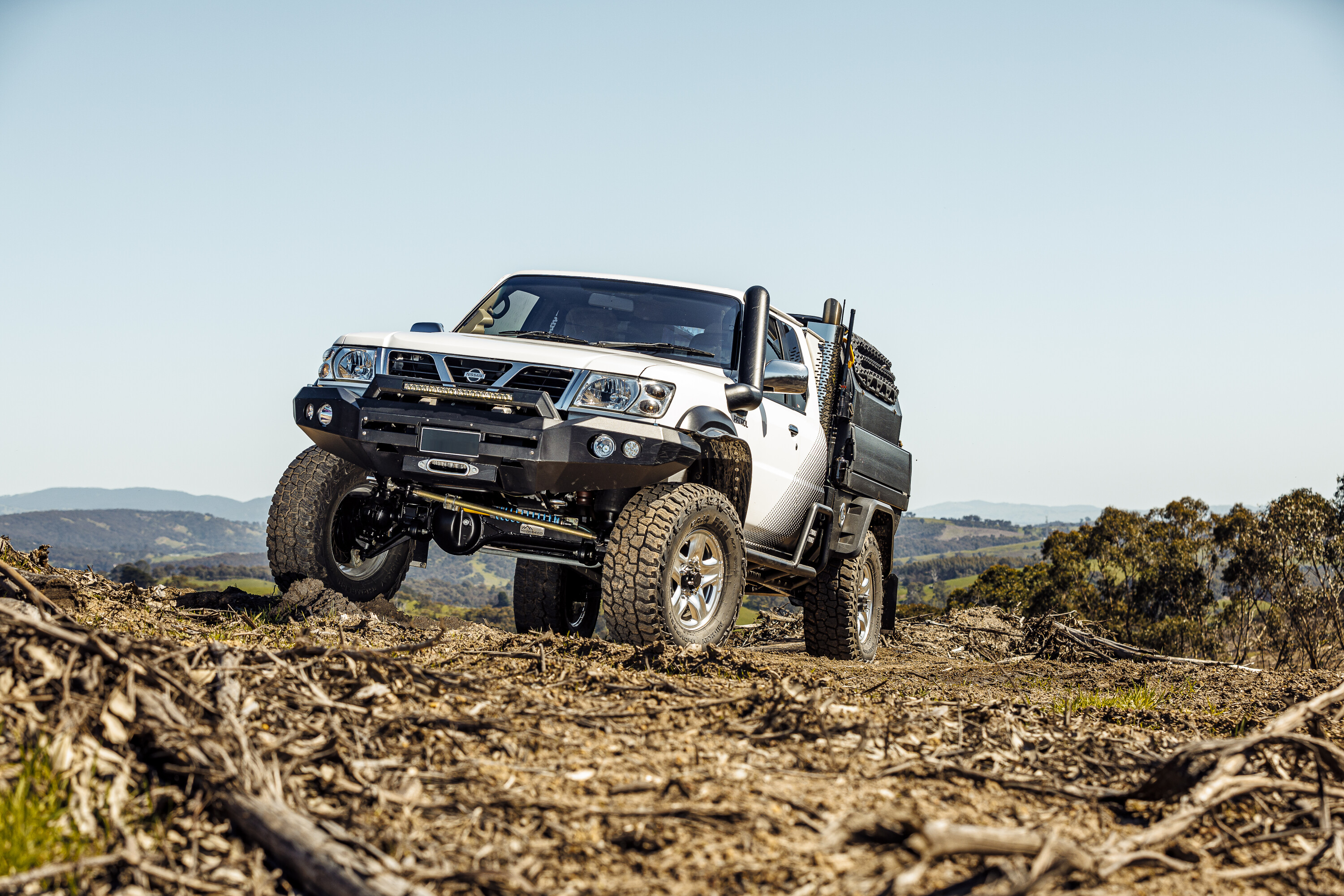
Speaking of big builds, there’s none bigger than this 2024 Chevrolet Silverado HD pieced together by Aussie Destinations Unknown (ADU). With a BDS suspension kit supplied by Big Dog Builds lifting the big rig a total of six inches in the front end and 6.6 inches at the back, this Chev is built to go the distance. It has an all-inclusive canopy, as well as a boat loader for getting the boat up on to the Big Dog Builds rack.
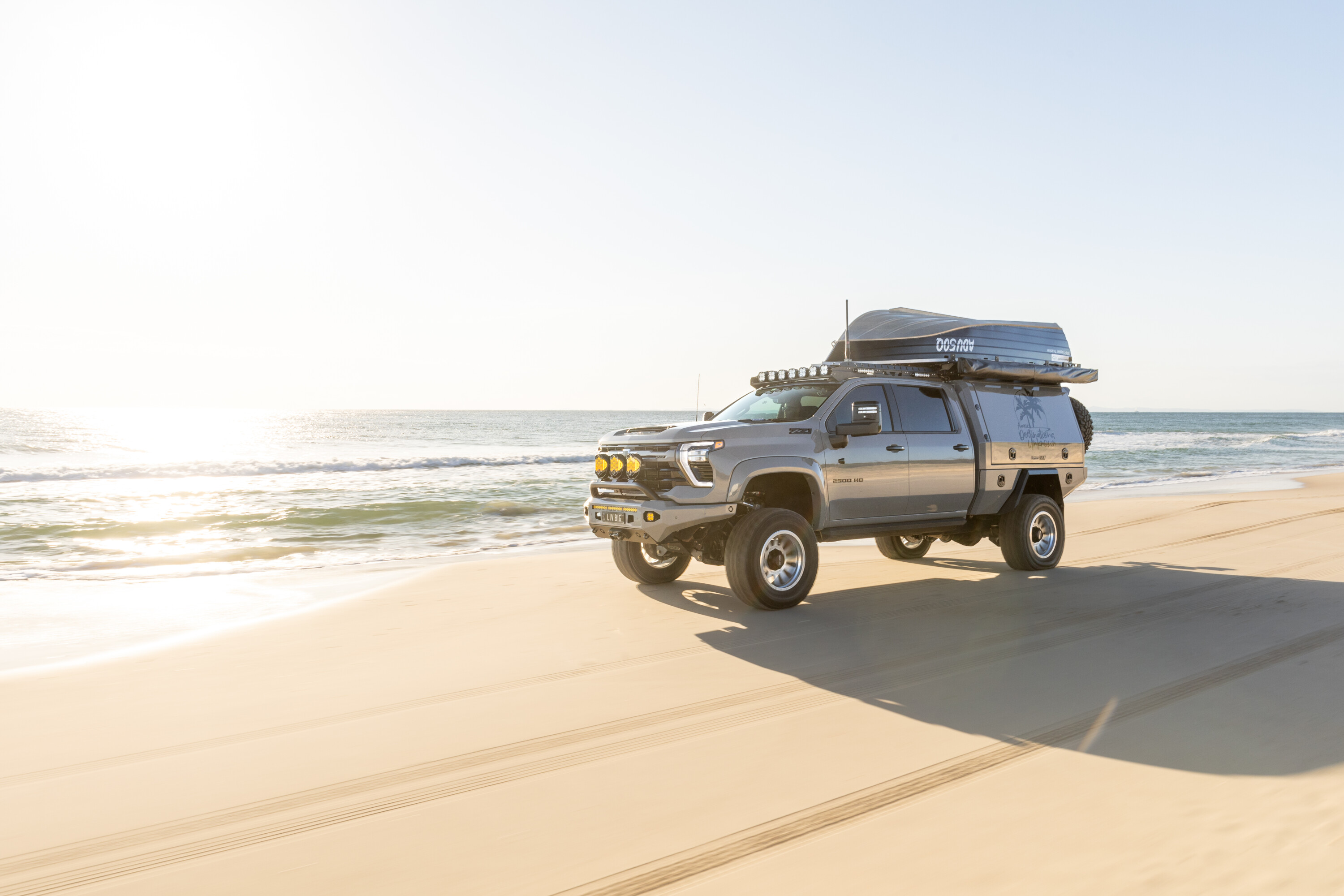
Closer to home, our Ford Everest Ambiente received a Tough Dog GVM suspension upgrade, increasing its ground clearance, improving ride and handling, and offering more load-carrying capabilities. As the build nears completion, we took it for a touring trip and we couldn’t be happier with how the project has turned out. You can read all about it in this issue.
We also got a bite-sized taste of the BYD Shark, ahead of customer deliveries which are expected to start rolling out in December. The Shark uses a PHEV drivetrain that combines a 260Nm 1.5-litre turbocharged petrol engine with a pair of electric motors, one each for the front (310Nm) and rear (340Nm) axles. After the preview, Matt said the drive showed a lot of promise in terms of its high level of equipment, its performance and its size.
On the travel front, Ron Moon battles what is arguably Australia’s toughest 4×4 track, the Canning Stock Route; we venture to Millstream Chichester National Park in the vast Pilbara region of Western Australia; and we shortlist five of the best 4×4 tracks in Victoria.
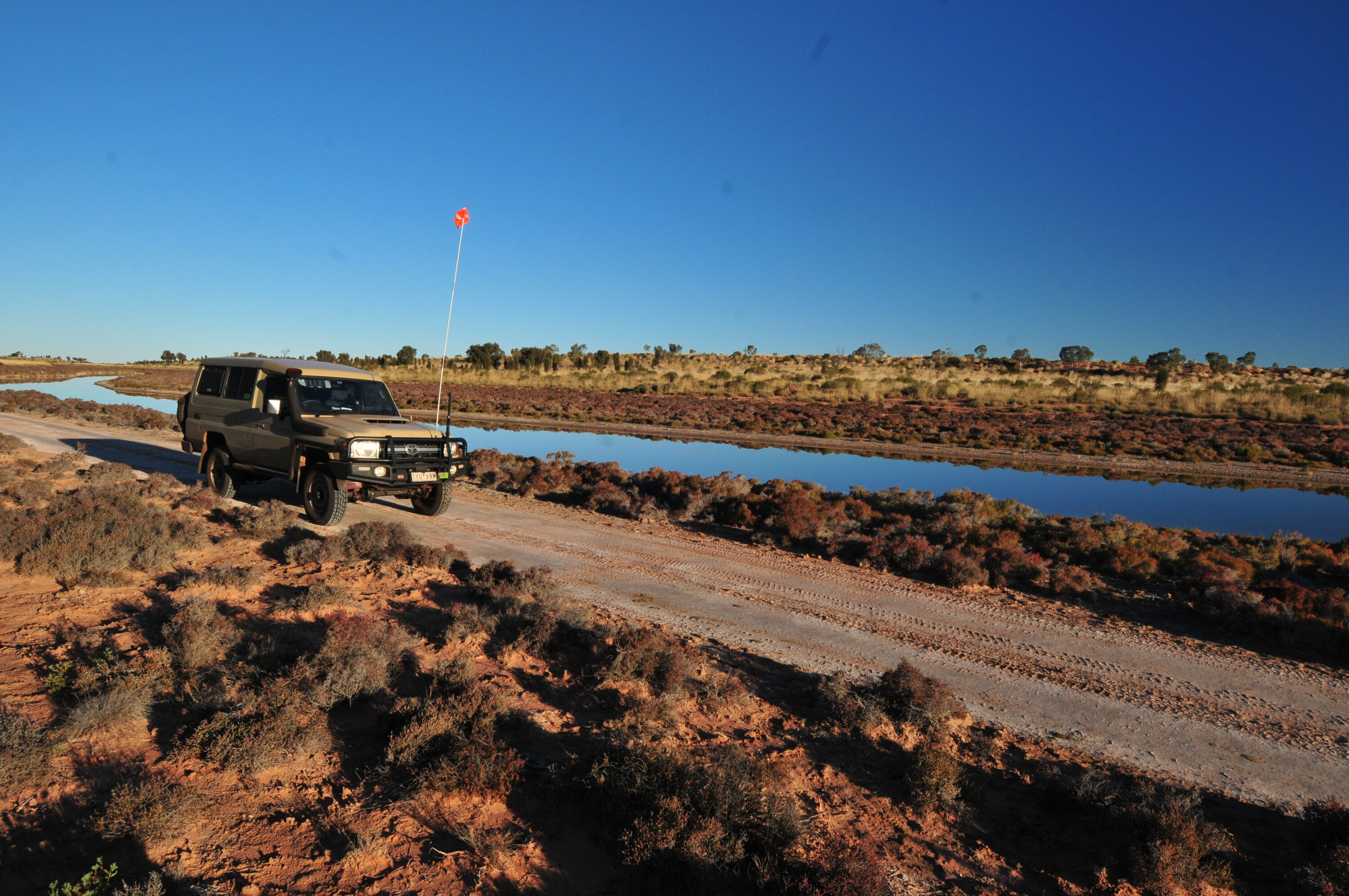
Voting for the 2024 Maxxis Custom 4×4 of the Year ends on November 8, so vote now for a chance to win a Maxxis Tyres voucher valued at $1000!
What else is there?
- Cooking with camp ovens
- TrailMig welder tested
- Lazer Sentinel 9-inch Elite tested
- Terrain Tamer disc brake conversion
- FlashLube pre-filter kit tested
- News, prices and more!
The December 2024 issue of 4X4 Australia is out now.
While they are rife in the passenger-car world, the introduction of electric vehicles has been a relatively slow trickle to the 4×4 world.
However, 2025 will bring a swag of electric 4x4s to the local market, particularly the PHEV (Plug-in Hybrid Electric Vehicle) variety. We’ve seen pseudo hybrids like the 48-volt boosted vehicles from Land Rover, Jeep and Toyota, but they don’t offer any real electric driving. More recently we’ve driven the BYD Shark which is a proper PHEV, and soon we’ll have similar vehicles from GWM and Ford… and we can expect a lot more to come.
When it comes to EVs for 4×4 adventuring, PHEVs are the only option that make any sense, and even then it’s limited. Battery Electric Vehicles (BEVs), which have no internal combustion engine back-up, simply do not have the range to travel very far.
A PHEV can switch between EV and ICE motivation; the latest ones use the ICE purely to keep the EV battery charged, with drive to the wheels all coming from electric motors. In this application range shouldn’t be an issue so long as you have access to petrol, diesel or a vehicle charger. So, there is an option for adventurous EV fans.
The bigger problem with 4×4 EVs is the amount of weight they add to a vehicle and the space the systems take up. The battery packs, motors, converters and heavy cabling all add weight, and we all know that weight is the enemy of off-road driving, and we’re already limited by restrictive GVMs that must be adhered to.
At the moment, you’re much better off with huge long range fuel tanks that will carry enough fuel to take you as far as you need to travel than any sort of EV configuration. It’s a different story for city cars but we’re talking 4x4s here, and internal combustion engines are, for now, the only viable solution.
One adventure you’re not going to be taking a BEV on, and one you wouldn’t even want to rely on a PHEV for, is the Canning Stock Route in Western Australia. It’s regarded as one of the longest and most remote tracks in the world, and it’s on the bucket list of most off-road adventurers.
Many years ago, I was on a trip up the CSR in a convoy of Mercedes G-Wagens that all blew out their shock absorbers while crossing the track’s notorious corrugations. The convoy was left stranded for a few days while replacement shocks were flown in from all around Australia.
If this is what Australian bush tracks can do to what is regarded as one of most legendary 4x4s on the market, on a trip backed by the manufacturer, I’d hate to see what it would do to a heavy EV from some Johnny-come-lately mob.
Government approval documents sourced from the ROVER (Road Vehicle Regulator) website have confirmed that a T60 successor is set to arrive in Australia.
In fact, LDV’s Australian website already has a page dedicated to its all-electric eTerron 9 ute, claiming it will arrive early in 2025. “A new generation of ute is coming soon … All-electric performance meets intelligent 4WD technology,” the website says.
The approval documents include a number of variants that consists of the eTerron 9 AWD; eTerron 9 RWD; Terron 9 AWD; and Terron 9 RWD.
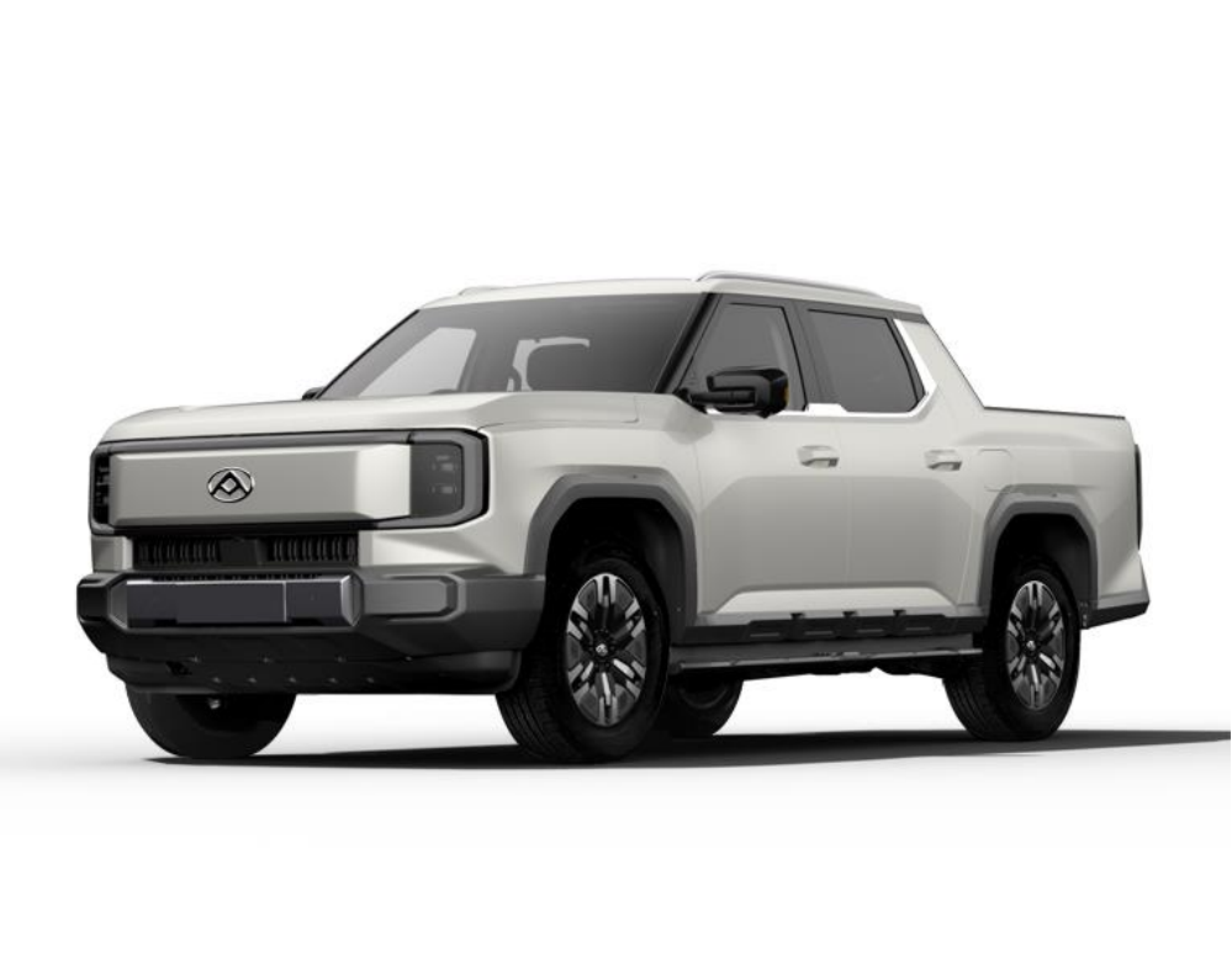
The eTerron 9 is powered by either a single 200kW rear electric motor, or dual-motor all-wheel drive for a total combined output of 325kW (200kW at the rear and 125kW at the front). The ICE Terron 9 is powered by a four-cylinder 2498cc turbo-diesel engine that can generate 163.5kW and runs through an eight-speed automatic transmission – torque figures are not included in the report.
All variants measure 5500mm (length), 1997mm (length), 1860mm (height); 3300mm (wheelbase); and 1685mm (front and rear wheel tracks). The electric variants have a running clearance of 230mm, but that drops to 220mm for ICE variants. Variants are listed with a braked towing capacity of 3500kg and an unbraked capacity of 750kg.
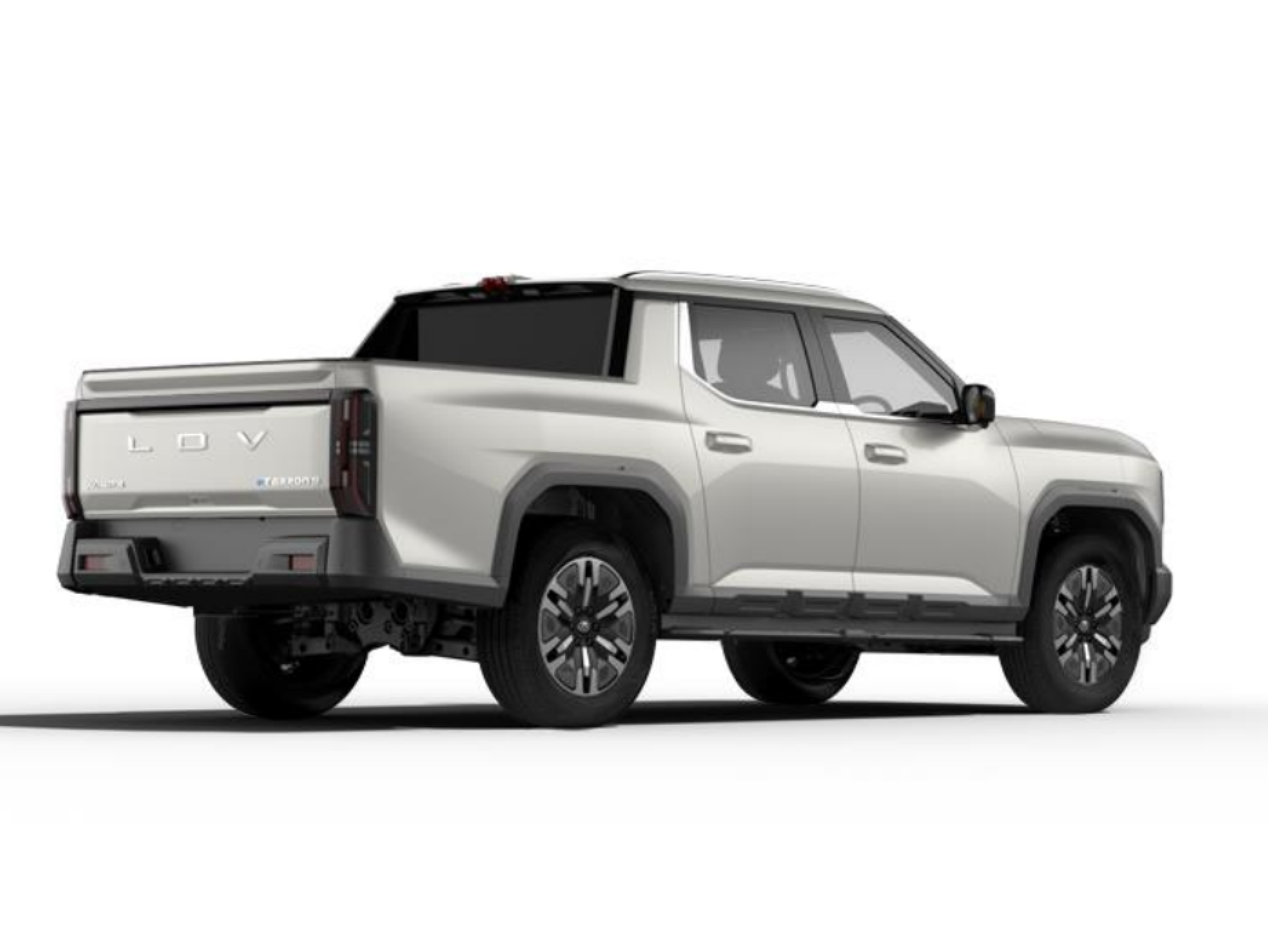
265/65R18 tyres and 18x8J wheels are standard across the range, but the report says 275/55R20 tyres and 20×8.5J wheels are optional.
Release dates and pricing are yet to be confirmed, but stay tuned and we’ll provide that info as soon as we get a hold of it.
Toyota has unmasked a retro-inspired, open-air ute concept based on the upcoming Prado, dubbed the LandCruiser ROX (Recreation Open eXperience).
Set to debut at the 2024 SEMA Show in Las Vegas, the one-off concept is the brainchild of Toyota’s North American design studio, Calty Design Research, the same group that played a part in the creation of the all-new Prado that’s set to launch in Australia by the end of 2024.
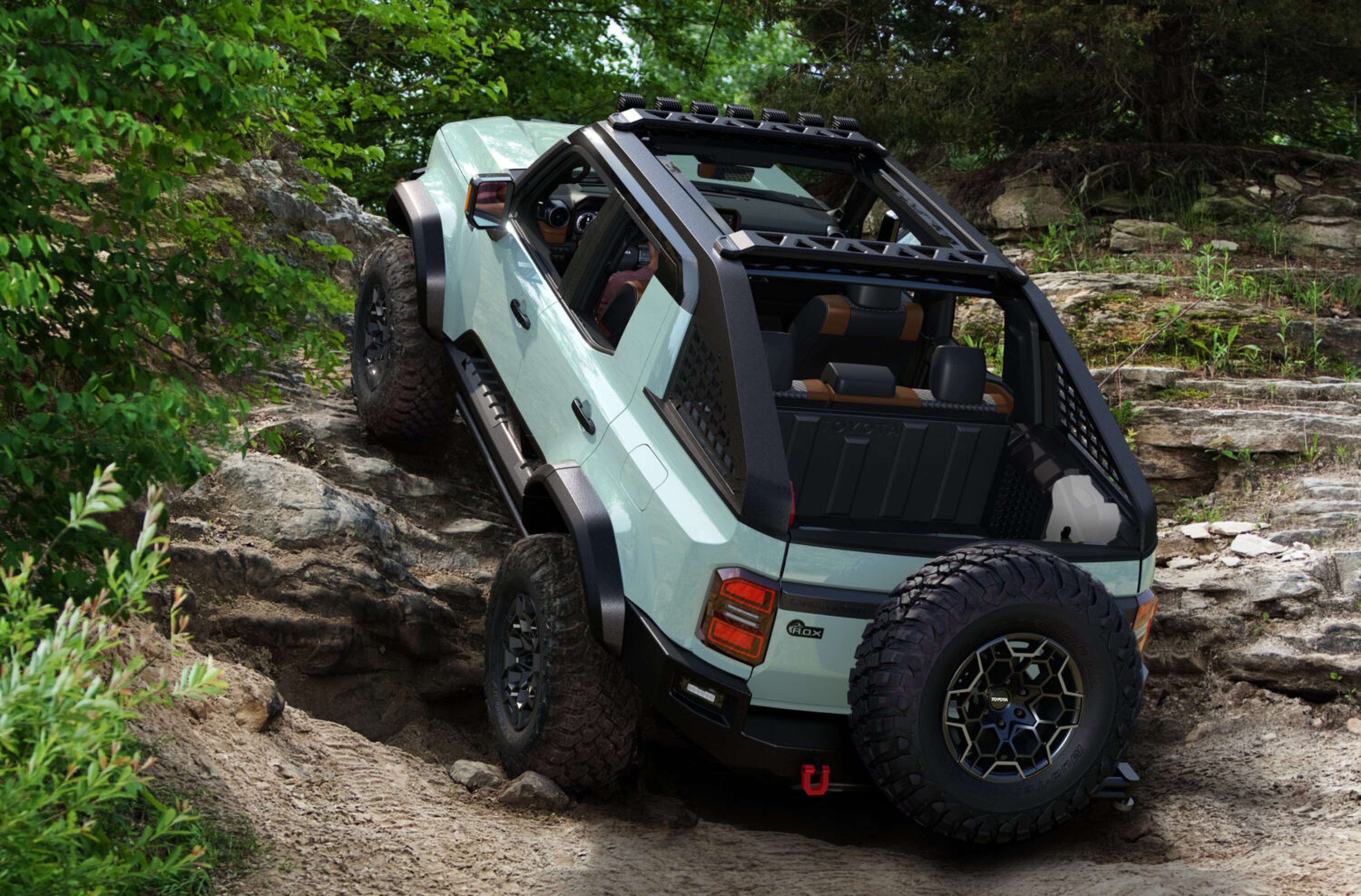
Using a new Prado (known as the Prado 250 in the USA) as a base, more than 50 per cent of the vehicle was reinvented and fabricated – Custom “skeleton” doors sit atop high-clearance rocker panels and rock rails; a front-to-rear sliding soft top allows simple open-air experience; and a mid-gate between the cabin and tub provides easy access.
On the inside, Heritage Orange leather helps the ROX concept stand out, as do custom SLS Nylon 3D printed bits (front and rear door sills, for example). As a nod to LandCruiser’s heritage, a vintage Spring Green hue is used for the exterior.
“We asked ourselves how we could make an even more exciting experience for our LandCruiser enthusiast but from a real product perspective,” said Kevin Hunter, president at Calty Design Research. “Using LandCruiser 250 as a base, we modified the body to open it up, expanding the usability, functionality and overall fun outdoor experience.”
The ROX concept also features an integrated triple-bar roof rack and sports bar with molle panels; a custom jerry can next to a rear spare carrier; high-lift front and rear steel bumpers; and massive fenders covering huge tyres around Calty 18-inch machined billet wheels.
Adding to its go-anywhere appeal is the implementation of independent suspension by TRD, which raises the vehicle by four inches and increases track width by eight inches courtesy of forged aluminium control arms (front and rear). This also helps give the vehicle its chunky, aggressive stance.
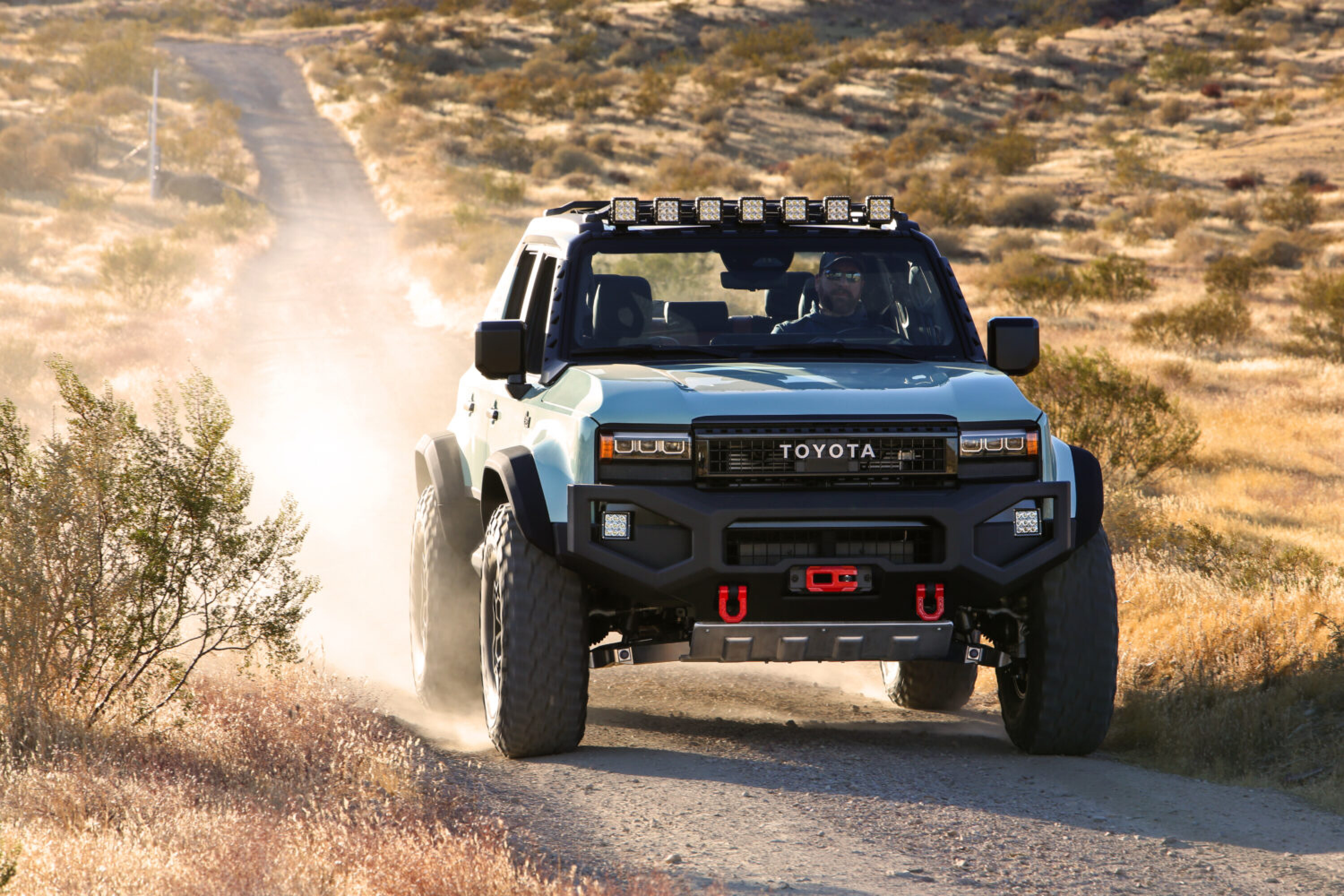
“This ambitious, one-of-a-kind build, is a testament to Toyota’s commitment to pushing boundaries while staying true to the spirit of adventure that the LandCruiser embodies,” said Mike Tripp, group vice president, Toyota Division Marketing, Toyota Motor North America.
“The LandCruiser ROX is a reminder of what LandCruiser has always been, and an invitation to LandCruiser fans who will appreciate experiencing the great outdoors in an entirely new way. We can’t wait to see how they react,” he added.
The LandCruiser ROX concept will be on display at the 2024 SEMA Show in Las Vegas, from November 5 to 8.
Having enjoyed running with the Kumho MT51 mud tyres for many years, when the new Road Venture AT52 all-terrain tyre was released, I was keen to test them in the same conditions as the mud tyres in the past.
When it was time for a new set of rubber, my local Tyrepower dealer had the AT52s ready to go. Over a comprehensive 32,000km, these new tyres have been tested on all types of surfaces and conditions and performed excellently.
In muddy conditions in Murray Sunset National Park, the wide voids and staggered shoulder lugs came into play, providing excellent self-cleaning properties. This meant the tyres shed mud quickly, maintaining traction even in the deep, sticky stuff.
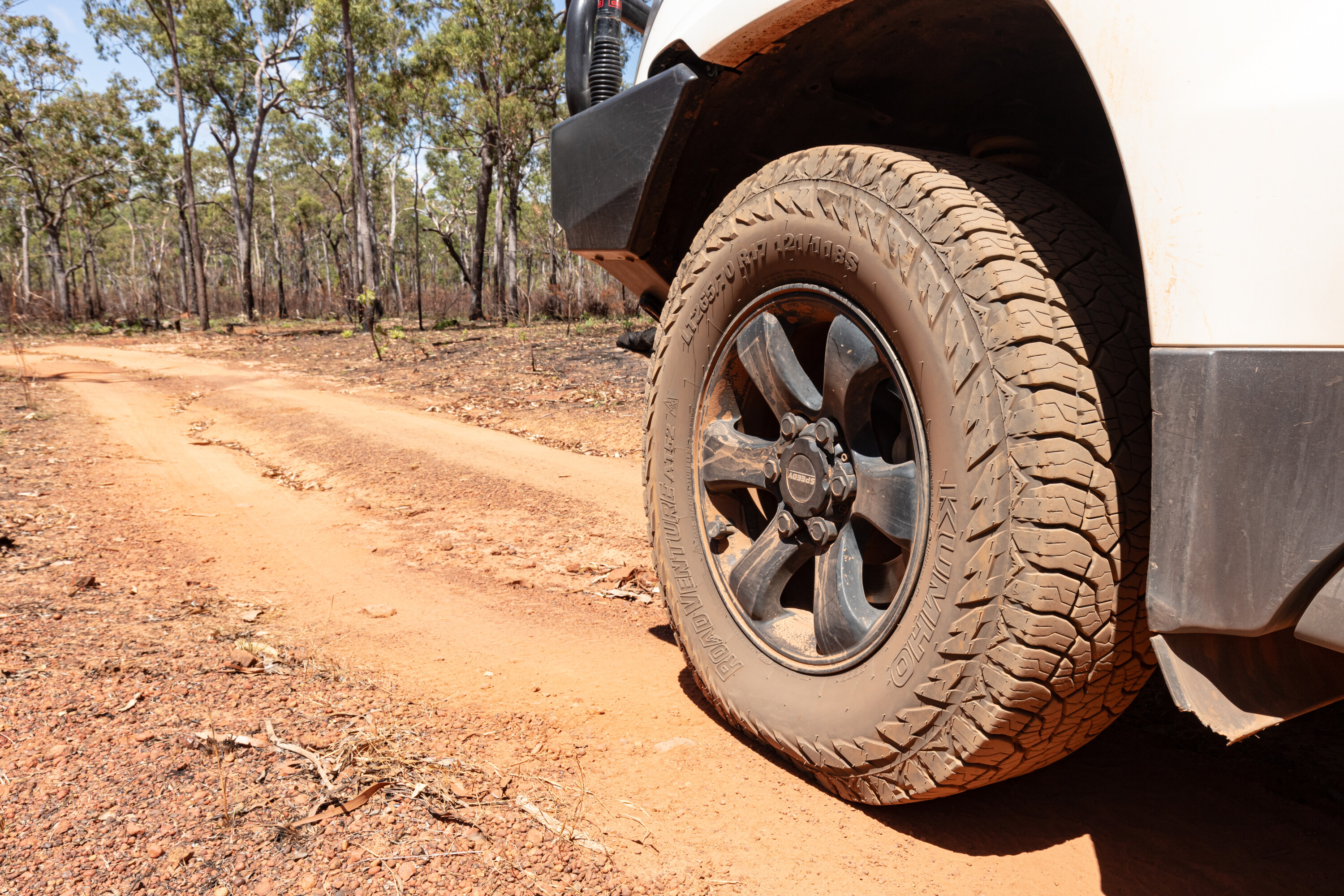
Corrugations on the Savannah Way and Arnhem Land were handled with ease, even with lowered tyre pressures, the tyre’s robust construction, reinforced sidewalls and high-strength steel belts allowed reduced pressures to be kept at higher speeds.
The Kumho AT52 loves sand of all types and depths, the Finke River Track, Simpson Desert and Arnhem Land beaches were no match, and the manual-geared Prado enjoyed this terrain for the first time. There was a high risk of staking on the Nyangumarta Highway however the tyre’s durability ensured that it could take on rough tracks like this without sustaining significant damage.
While the Kumho AT52 is an all-terrain tyre, its performance on bitumen is important too. On the blacktop, these tyres exhibited impressive stability and handling. The dual silica compound provided excellent wet and dry traction and even at higher speeds, the tyres maintained a firm grip, which translated to a confident driving experience.
Noise levels are low with the AT52. Kumho has incorporated advanced noise-cancelling technology into the tread design, which minimizes the road noise typically associated with aggressive tread patterns. This makes for a quieter, more comfortable ride on the highway.
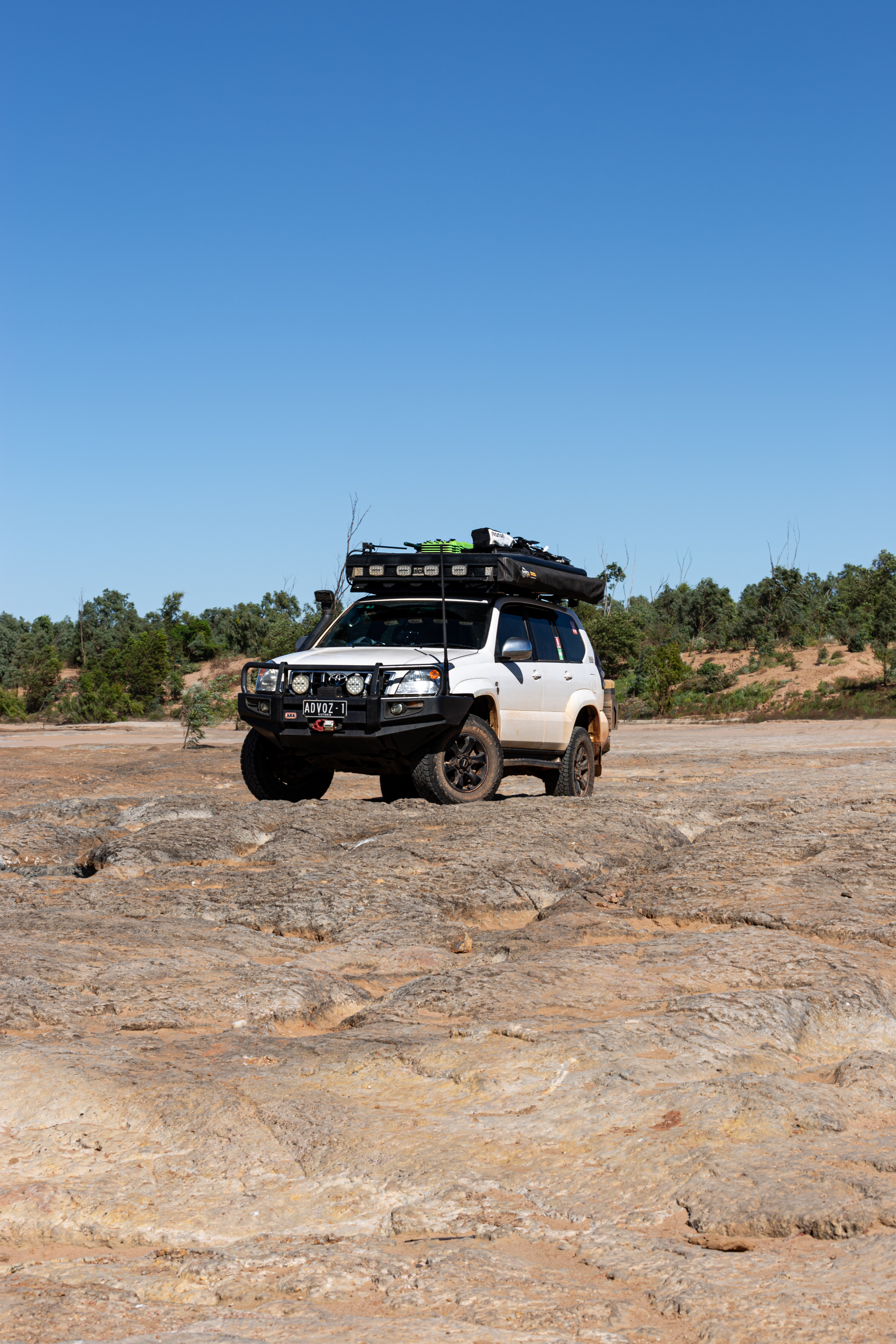
For me, durability is an important factor for all-terrain tyres, given the harsh conditions they are often subjected to. The Kumho AT52 tyres appear to be built to last, with its tough construction withstanding the rigours of off-road driving. In terms of longevity, the dual silica compound not only improves traction in wet conditions but also contributes to slower wear. This means that the tyres have maintained their performance characteristics.
The Kumho AT52 tyres are a robust and versatile option for those looking for a reliable all-terrain performance without breaking the bank. Tyres and suspension work the hardest when you are travelling and having a tyre that you can rely on in any condition is important and these tyres do that for me.
Having survived the harshest conditions I could throw at them, they came through without a scratch, chip or puncture and they are wearing nice and evenly.
Over the years I’ve used and tested at least four different brands of tyre pressure monitoring systems (TPMS) including the cheapest I could find on the internet and some of the dearest available from reputable suppliers.
None worked particularly well and for the past two years I’ve been running TPMS free, which in retrospect isn’t the best idea I’ve ever had. On our most recent trip on the Canning Stock Route I heard so many good reports of the Safety Dave Tyre Pressure Monitoring System that I relented and fitted one.
There are a number of models to choose from, from the basic four-sensor unit for around $380 to a 22-tyre version for trucks. We opted for the ST-3000 kit which includes the receiver/monitor with rechargeable lithium battery, a suction mount for the monitor, charging cable and hardware, eight sensors, spare sensor batteries, lock nuts and O-rings.
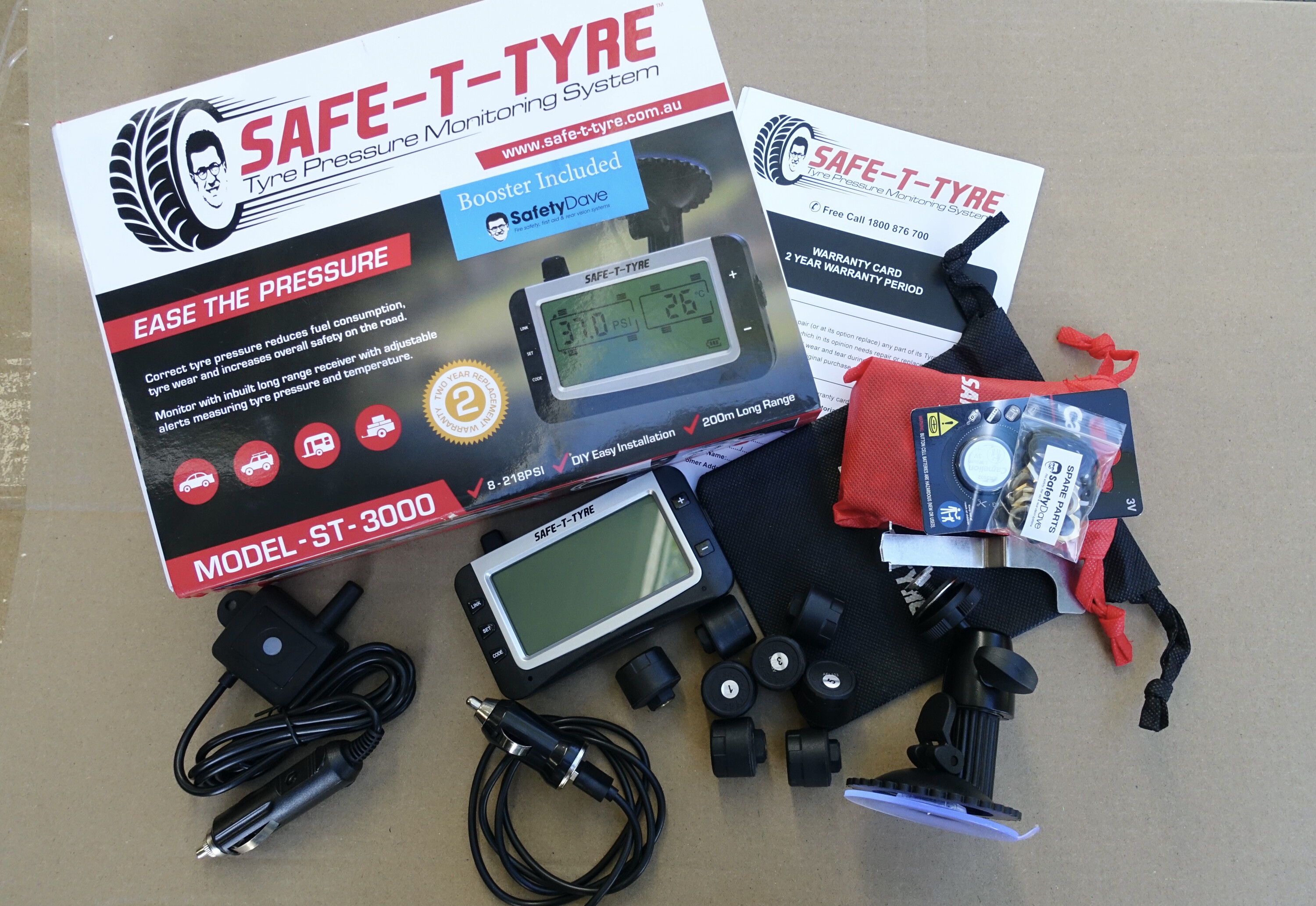
The ST-3000 comes with a separate signal booster unit to improve signal reception from a trailer or van. This unit needs to be plugged into power and for the best results situated at the rear of the tow vehicle. While we didn’t have any problems with receiving the signal from the van without the booster, we had an ideal mounting spot and power available that made it a no-brainer.
The 3.5-inch monitor has up to 80 hours of rechargeable battery life and detects tyre pressures between 8psi and 218psi.
The installation is simple with the first step to pair the sensors with the receiver before fitting them to the tyres. Once they are talking to each other – the time taken was less than five minutes to pair all six sensors I wanted to use – you fit the sensors to the tyres. You can set the pressures (both high and low) and temperatures that the monitor will alarm at.
Once the vehicle is moving the receiver may take a minute or so (usually less) to pick up the signal from each tyre. The monitor displays what tyre is being monitored at that particular time and the tyre pressure and temperature that the tyre is at. It took about 15 seconds for the monitor to look at each of the six tyres we had on the ground.
Where you position the screen is very much up to you but I’ve got it out of the way as much as possible so it’s out of my line of sight, as it will alarm whenever the tyre pressures you have set are reached anyway.
With a few thousand kilometres of blacktop, dirt roads and rough tracks under the wheels since I’ve fitted them, the TPMS has already saved a tyre that picked up a slow puncture while we were wandering across the Gulf Road in northern Queensland. Before any damage was done the TPMS alarmed and we had a plug in the tyre and were soon on our way again.
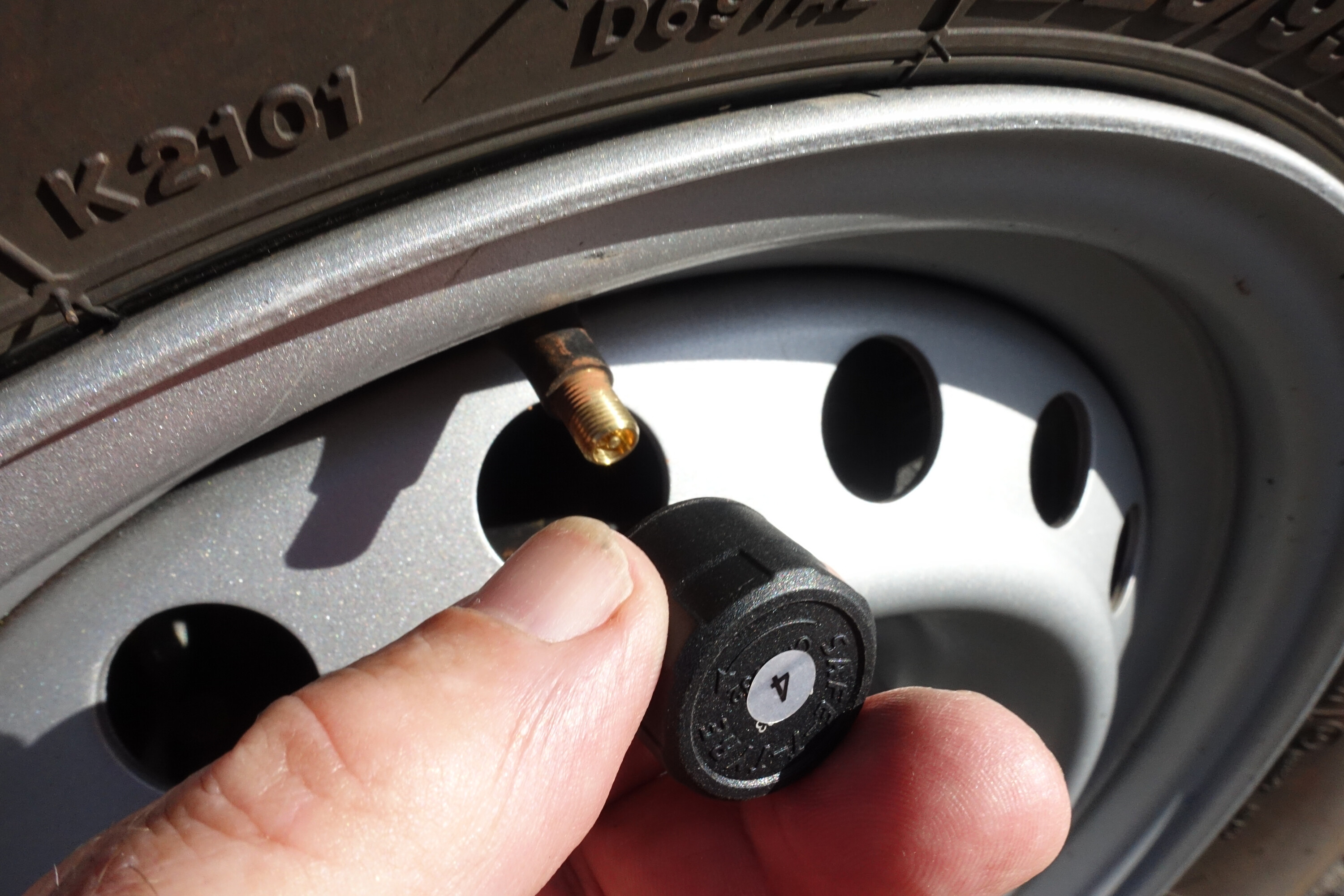
A hint I got from other travellers was to fit a piece of ordinary garden hose to the valve stem of the tyre. This stops the rubber valve stem from vibrating and the TPMS transmitter from knocking against the wheel, which can mark the rim (especially an alloy rim) and could possibly damage the transmitter. It should be noted that the Safety Dave TPMS is covered by a two-year warranty.
I’m more than happy with this particular brand and model of TPMS and I reckon it’ll save more than just that one tyre, most likely one of the trailer tyres, as a slow leak from there is difficult to detect through any change in driving feel.
RRP: $530 (8-sensor kit)
It has been decades since Toyota sold the Hilux-based 4Runner in Australia, but the model has soldiered on in the USA where the latest generation went on sale earlier this year.
Obviously showing signs of the original 4Runners from the 1980s, the Toyota USA designers couldn’t resist building this cool concept based on the latest model, for the 2024 SEMA Show.
“The 2025 4Runner reminded me of the original, with its rugged look and powerhouse four-cylinder engine. I knew it had the potential to be the ultimate beach cruiser,” said Marty Schwerter, lead builder and director of operations at Toyota’s Motorsports Technical Centre.
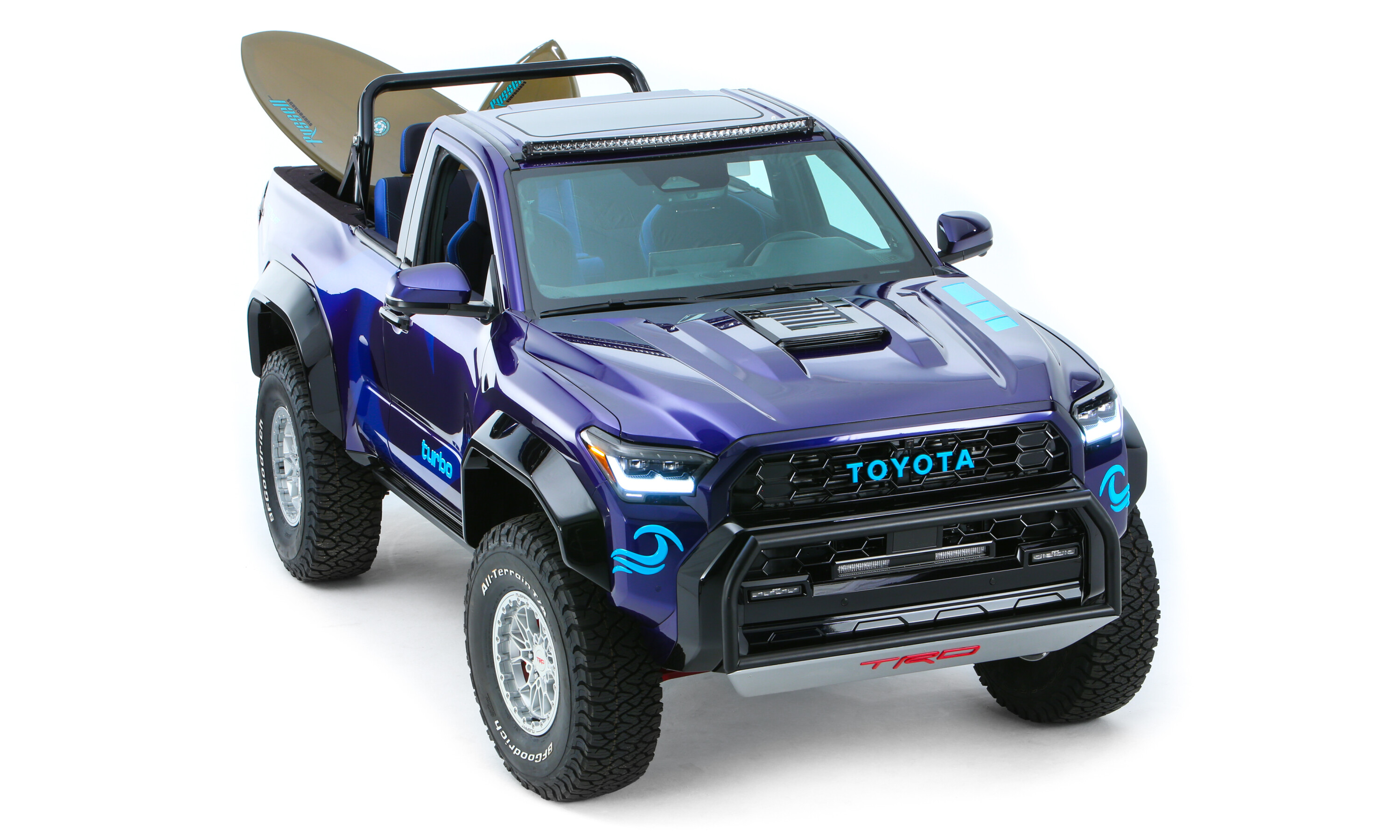
“We wanted to create something that would resonate today while paying homage to the past. The removable top was a must, just like the original, and we made sure it’s as functional as it is stylish.”
Dubbed the 4Runner TRD Surf Concept (the 4Runner was called the Surf in some markets) the concept began life as a new 2025 4Runner TRD Limited, powered by the iForce 2.4-litre turbocharged petrol engine backed by an eight-speed automatic transmission and full-time, dual range 4WD system. Using the turbocharged iForce engine allowed the designers to include the retro ‘TURBO’ decals on the sides of the concept.
Body modifications are extensive, with the original four-door wagon being converted to a two-door, the roof cut up, and removable panels being fabricated and installed.
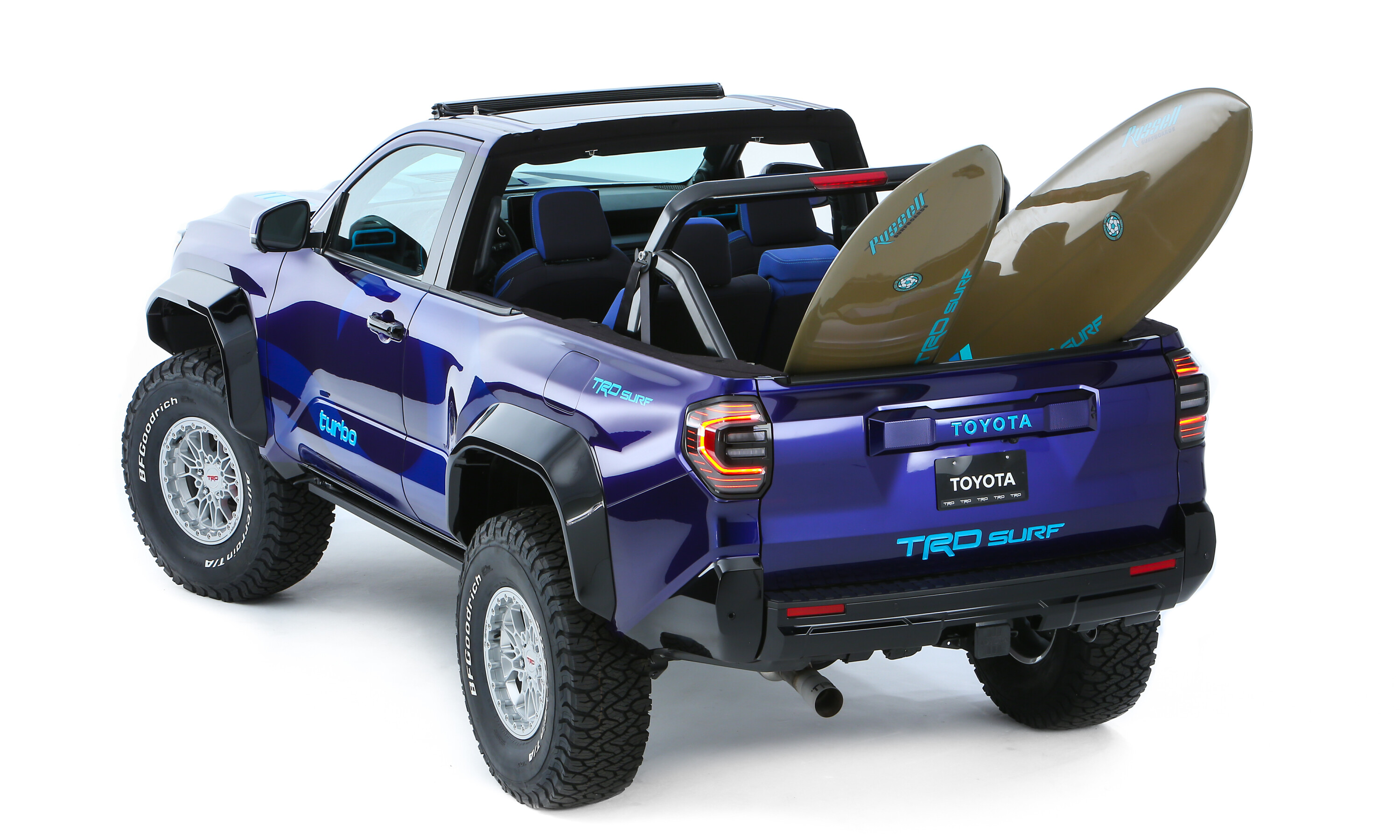
Underneath, a long-travel suspension system using billet aluminium front A-arms and Toyota Tundra rear-end housing complement the custom suspension. 37-inch tyres on custom 17-inch wheels add to the concept’s muscular appearance, while the surfboards poking out the top complete the cool coastal look.
The 2025 4Runner rides on a version of the TNG-A ladder chassis that also underpins the LandCruiser 300 Series, Tundra and the soon-to-be-launched 250 Series Prado. Given the platform can be had in right-hand drive, who wouldn’t rather a new 4Runner than the Toyota Fortuner currently offered here?
Speaking of the 250 Series, it’s sold in the USA as simply the LandCruiser 250, and we’re expecting to see a whole lot of them with all sorts of modifications and customisation at the SEMA Show this year – so keep your eye on this page for more revelations over the coming week.
The 2024 SEMA Show runs from November 5 to 8 in the city of Las Vegas and is a Mecca for any automotive enthusiast.
In the 24 hours since pricing was released for the all-new Shark, more than 2000 orders have already been placed by the public.
In fact, the surge in traffic to the BYD website caused it to temporarily crash, as order books opened with an introductory price of $57,900 (plus on-road costs).
The Shark 6 will be exclusively distributed by Australian company EVDirect, with the company’s Managing Director, Luke Todd, expressing his surprise at the unprecedented level of interest.
“We knew the market was wanting a vehicle of this calibre, but to see so many orders so quickly has taken us by surprise,” Todd said. “It is simply in a different league to anything on the market, and at the price of $57,900 (plus on-road costs) the value for money speaks for itself.”
The Shark 6 features BYD’s DM-O technology, combining a 1.5-litre turbocharged petrol engine with dual electric motors for a total output of 321kW and 650Nm. Plus, a 29.58kWh Blade Battery provides 100km of electric range and a total range of up to 800km.
The Shark’s interior includes a leather-wrapped steering wheel, a 10.25-inch LCD screen, imitation leather seats, wireless connectivity, a 15.6-inch rotating screen, and heated and ventilated front seats with power adjustments. Full specs here ?
Ironman 4×4 has also partnered with BYD’s local distributor, EVDirect, to create a selection of products for the Shark. These factory-backed accessories include bull bars, roof racks, tonneau covers and canopies.